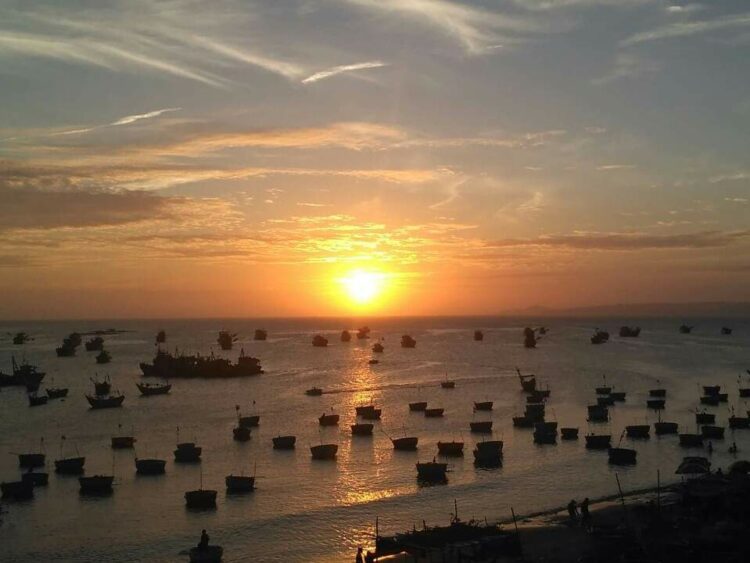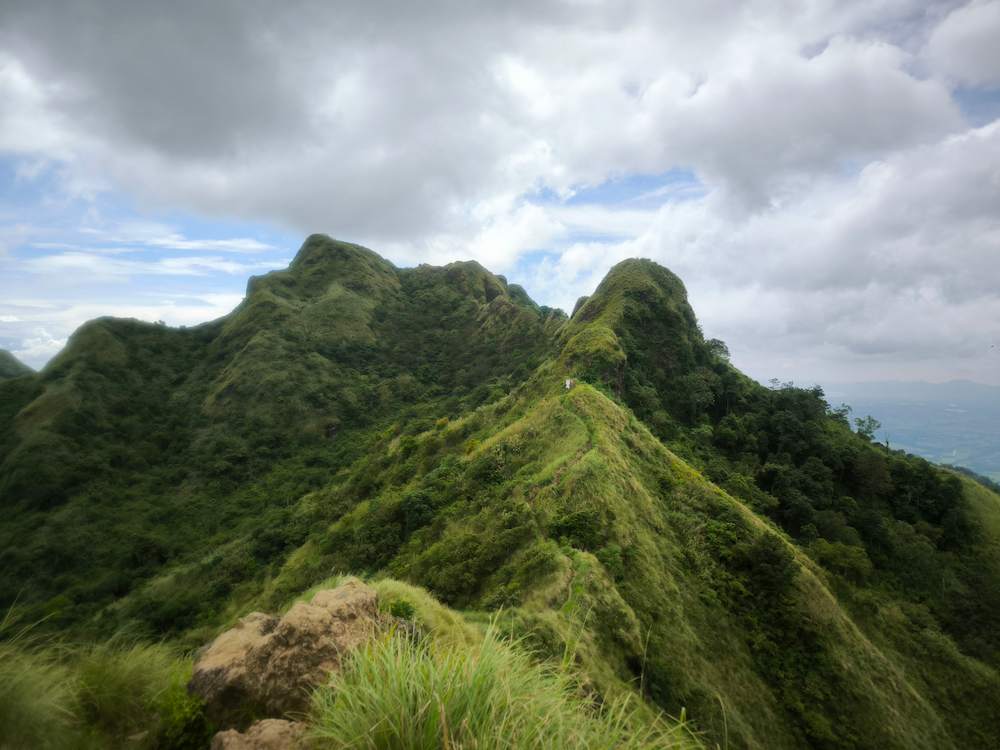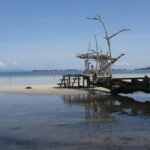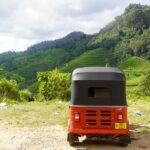Traveling Vietnam
In terms of area, Vietnam is about the same size as Germany, but the distribution is completely different. Compared to Germany, Vietnam is quite narrow, but it has a north-south extension of about 1650 km. Due to its long east coast, Vietnam borders only China, Laos and Cambodia.
Due to its elongated shape, the climate in the north and south of Vietnam differ greatly from each other. The south of the country is consistently hot, whereas there are also cooler periods towards the north. Therefore, it is difficult to single out the best time to travel throughout the country.
As in almost all Asian countries, Vietnam has a great street food culture. If you want to capture the flavour of Vietnam, sit down in the small restaurants on the side of the road and try your way through. Vietnamese cuisine is generally very meat- or fish-heavy.
Vietnam is definitely one of the more touristy countries, especially in the regions of Sapa, Halong Bay, Hoi An and Hanoi, you are never alone.
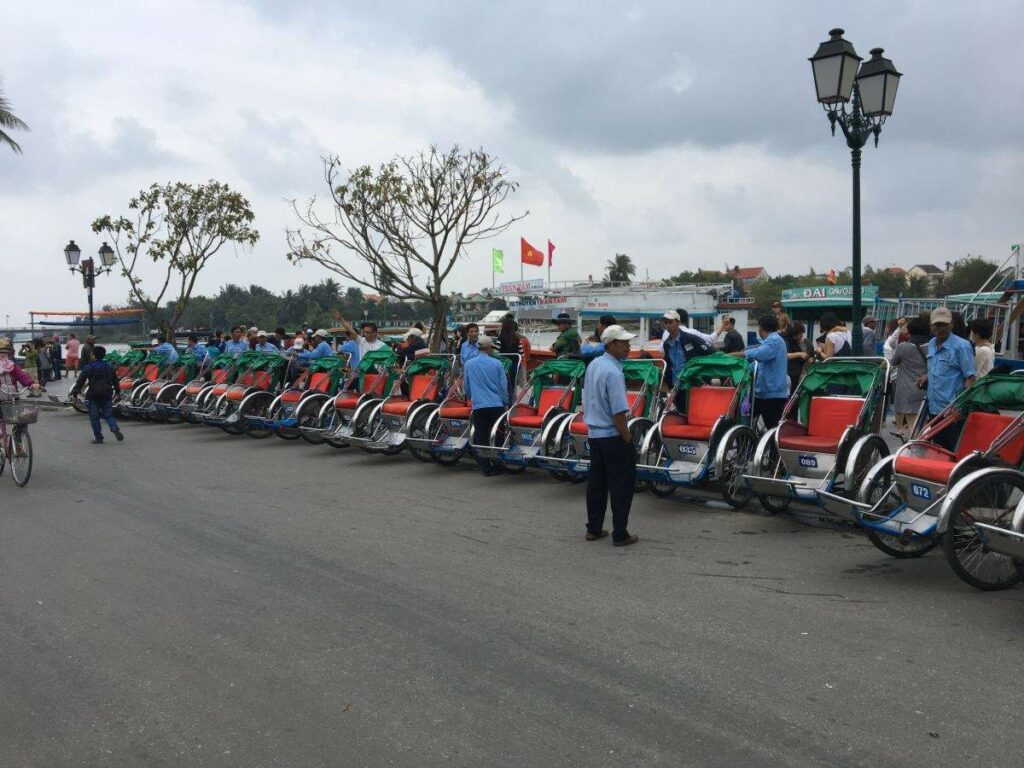
A trip to Vietnam
If I travel to Vietnam again, one thing is certain – I will do so by motorbike. It seems to be common practice for travellers to buy a motorbike there and sell it on to the next traveller before leaving. This gives you absolute freedom. Alternatively, as we did, you can get around Vietnam easily by public transport. Due to the language barrier, it was hardly possible for us to use the buses to get to places that are not yet so well developed for tourism. For the most part, the tour buses always follow the same routes. You will certainly think to yourself at some point, “Hmm, I’ve seen that one or those in Vietnam before. This is precisely because most people take similar routes when crossing from north to south or vice versa.
Top 6 highlights of your trip to Vietnam
It is really difficult for us to put the highlights of a country in order. We have compiled our highlights from 2 trips to Vietnam and have agreed on the order mentioned below. It should be said that the north of the country impressed us by far more than the south.
1 ) Ha-Giang-Loop
The scenic motorbike circuit in the north of the country was our highlight. We rented a scooter for 3 days and did the circuit. The loop in the north of the country, right on the border with China, takes you past dramatic gorges, picturesque rice terraces and traditional villages. We did the loop on our own and described in detail how it works and where to stay in our article on the Ha-Giang Loop.
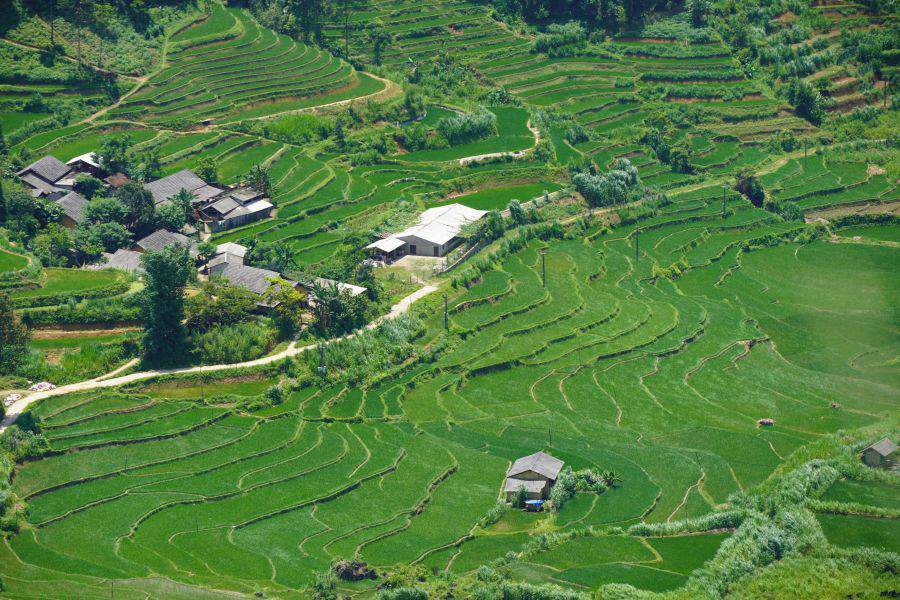
View of the rice terraces 
Great viewpoint on the Ha Giang Loop
2) Hoi An
If you’ve researched Vietnam in advance, you’ve probably come across the cute little town of Hoi An with its 75,000 inhabitants. The picturesque old town, the location by the sea and the surrounding rice fields make Hoi An a special experience. Even though it is very touristy, Hoi An offers its visitors a very special flair. For Hoi An we would plan a few days, because you can discover things in different ways. I can also recommend a bike tour through the surrounding rice fields. You can rent a bike at most of the accommodations. Learn everything you need to know about Hoi An in our separate article.
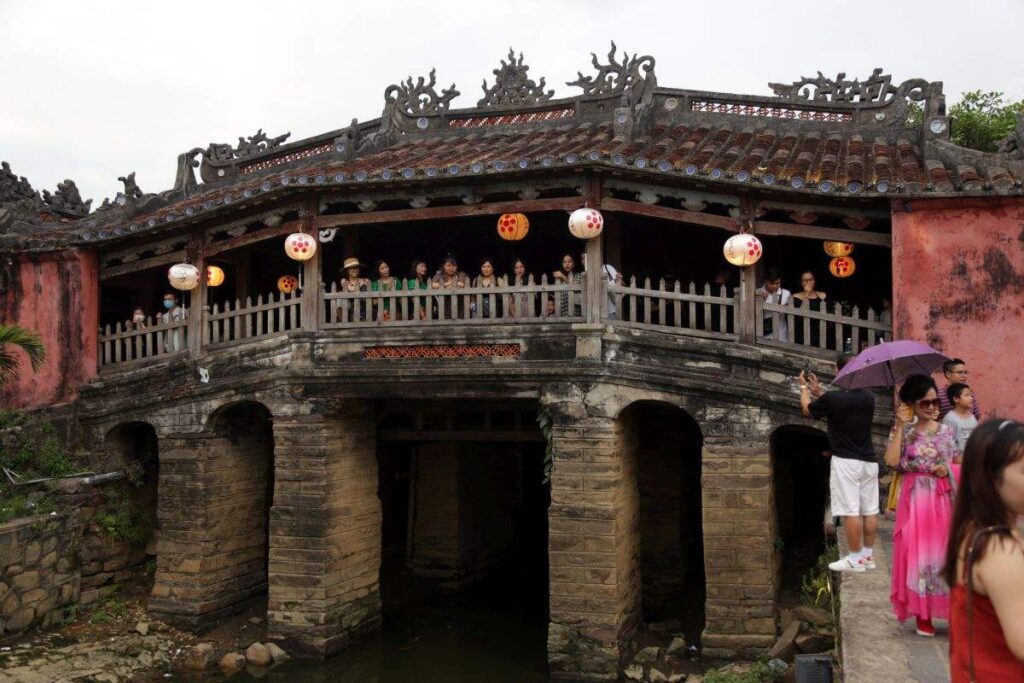
Japanese Bridge 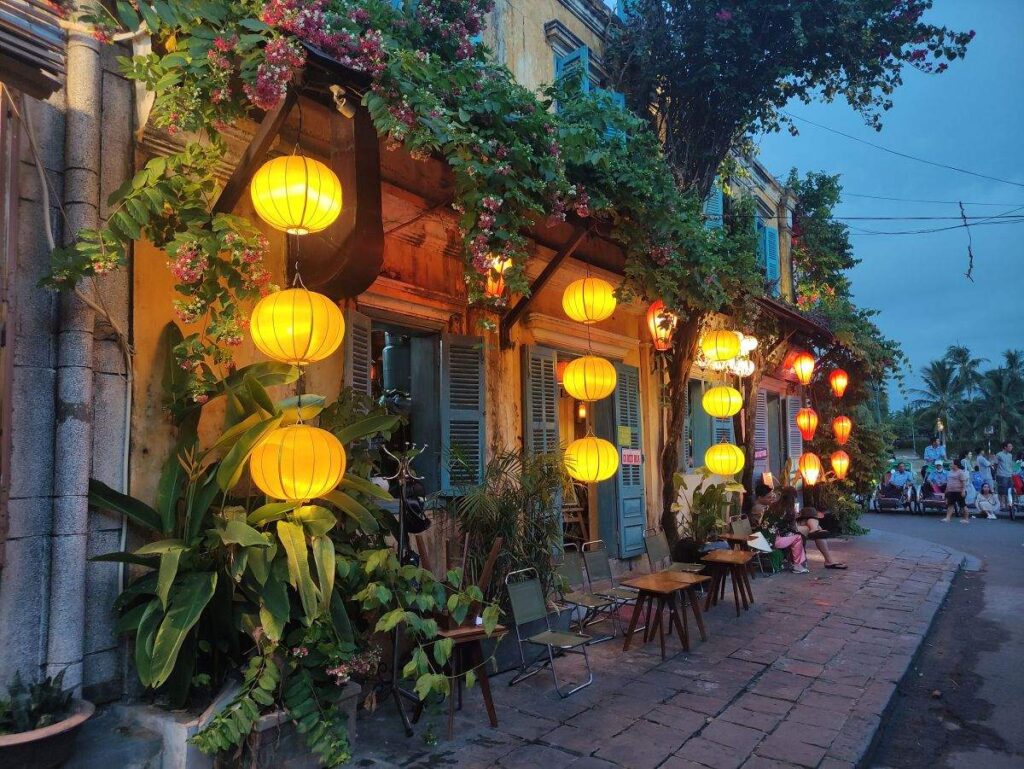
Illuminated Old Town 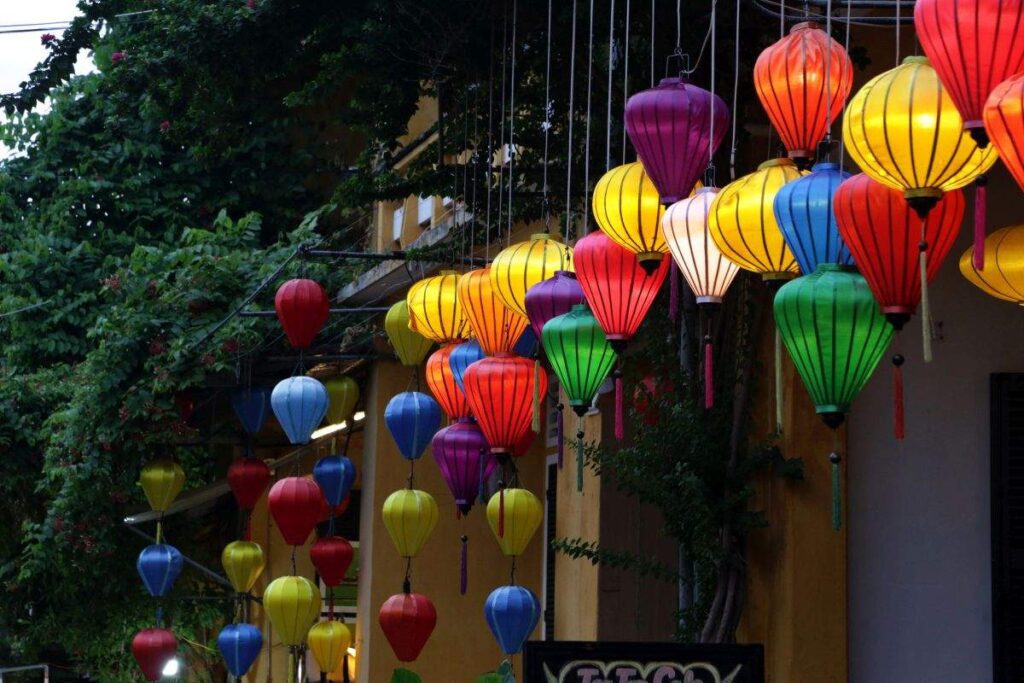
Lanterns of Hoi An
3) Ninh Binh (Dry Halong bay)
Barely 100 km south of Hanoi is the breathtaking scenery of the so-called dry Halong Bay. Characteristic for Ninh Binh, just like the world-famous bay, are the steeply rising karst rocks. In Halong Bay, these rocks rise out of the sea, in Ninh Binh they provide a mountainous backdrop. Some of the rocks look like giant, overgrown menhirs. In addition to a tour through one of the numerous canals by rowing boat, a visit to the Bai Dinh Pagoda and hikes in the surrounding countryside are particularly recommended. Find out what you can experience in and around Ninh Binh in our article on Ninh Binh – The Dry Halong Bay.

Boat Tour in Ninh Binh 
Bich Dong Pagoda 
Bai Dinh Pagoda Observation Tower
4) Hanoi
Hanoi is one of the few big Asian cities that I like. On the one hand, this is because Hanoi has a beautiful old town, something you can’t find in most Asian cities, and on the other hand because of the lively flair that the city exudes without stressing you to death. Those who like magnificent buildings should not miss the colonial mansions in the French Quarter. Typically, you will find small restaurants lined up almost everywhere, offering barbecue, hot pot and typical local specialities. Most of the action in Hanoi takes place around Hoan Kiem Lake. It is therefore advisable to find a place to stay in this corner. However, there is no shortage of hostels and accommodation in Hanoi. People who like to party also get their money’s worth in Hanoi.
[ngg src=”galleries” ids=”54″ display=”basic_thumbnail”]5) Mui Ne
The small fishing village of Mui Ne is located in the south of Vietnam. Particularly characteristic are the thousands of fishing boats lying off the coast. If you ask nicely, the people will let you take a turn …. What looks easy is actually quite difficult… I’ve turned around in circles about 50,000 times, but not a single metre forward. Fish lovers also get their money’s worth in Mui Ne. All you have to do is point to the fish you want to eat and you have a choice of many different ones. Mui Ne is also known for its colourful sand dunes. There are also many tour operators who will take you there and offer quad tours, for example. But in my opinion, it simply doesn’t have to be. Rent a scooter and explore the area on your own. A pretty cool and at the same time unusual accommodation is the Long Son. The special thing about the accommodation – you can sleep in tents right on the beach. There is also a huge indoor area. There are also tents inside the complex, as well as single and double rooms and dorms.
[ngg src=”galleries” ids=”57″ display=”basic_thumbnail”]6) Mekong Delta
Those who like it a little quieter and more relaxed should look for a cosy place to stay in the Mekong Delta. Buses from Ho Chi Minh City run with high frequency. The journey takes about 2-4 hours. There is great accommodation right on the banks of the Mekong River. Many of the islands are also car-free and thus contribute to a peaceful atmosphere. Characteristic, besides the gigantic brown water of the Mekong with its thousands of side arms, are the fruit plantations in the delta. Dragon fruit, rambutan
[ngg src=”galleries” ids=”56″ display=”basic_thumbnail”]Our itinerary through Vietnam
This is the itinerary of our first holiday in beautiful Vietnam. The second time we focused much more on the northern part of the country.
Day 1-3: Arrive and explore Hanoi.
Day 3-6: Ninh Binh: Dry Halong Bay and Bai Dinh Pagoda and visit some caves and faht to Hue.
Day 6-7: Hue, visit the Forbidden City and continue to Hoi An.
Day 7-12: Hoi An, shopping, unwinding, exploring the area by bike. Continue to Nha Trang
Day 12-13: Nha Trang: explore the town and continue to Mui Ne
Day 13-16: Mui Ne Relax on the beach, sand dunes, fishing village, continue to Ho Chi Minh City
Day 16-18: Ho Chi Minh City
Day 18-21: Vinh Long Mekong Delta and return to Ho Chi Minh City
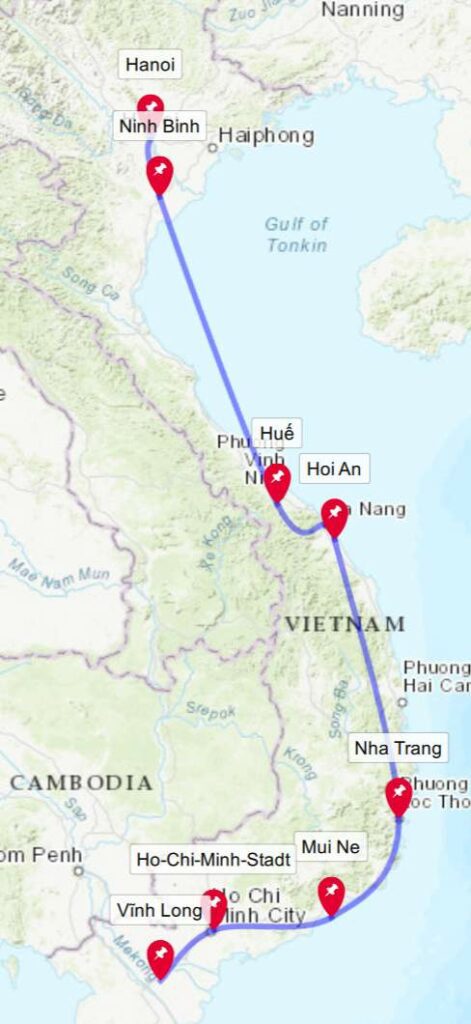
What you should know before your trip to Vietnam
- Die wenigsten Leute sprechen Englisch
- Viele Verkehrspolizisten sind korrupt – Diskutieren meist zwecklos.
- Bedenke beim Packen die Klimaunterschiede zwischen Norden und dem Süden.
- Denk dran dein Visum vorab zu beantragen!
Entry into Vietnam
German citizens require a visa to enter Vietnam. This must be applied for in advance at the embassy in Berlin. There is also a Visa on Arrival (VoA), but this is strongly discouraged. In our case, this also worked without any problems, but the Visa on Arrival is more or less only a letter (Approval Letter) from a travel agency, which in this case acts as an intermediary.
E-Visa for Vietnam:
You apply online at the following page and fill in your data. You can then make the payment and within a few days you will receive your visa by email, which you simply need to print out and present on entry.
Means of transport in Vietnam
As already mentioned above, next time I would travel to Vietnam with a motorbike, which I would buy in the north or south to sell on after the trip. The most common means of transport when travelling to Vietnam is by bus. However, there are also trains and flights between many Vietnamese cities.
Bus:
The buses in Vietnam are usually very comfortable. Since I’m a big fan of overnight trips, we mostly took night buses. The advantage is that you don’t lose time and you save the cost of accommodation. Night buses with sleeping seats for “normal” distances of 6-10 hours usually cost between 10 € – 20 €. The bus drivers are often very unfriendly and stressed. The sleeping cabins are not made for big Europeans, but you can stand it in them.
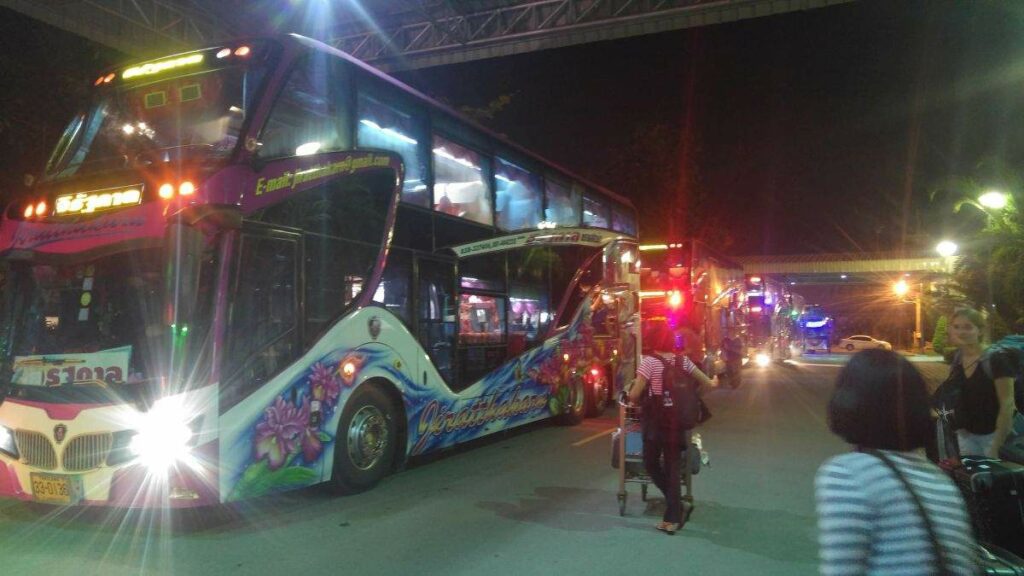
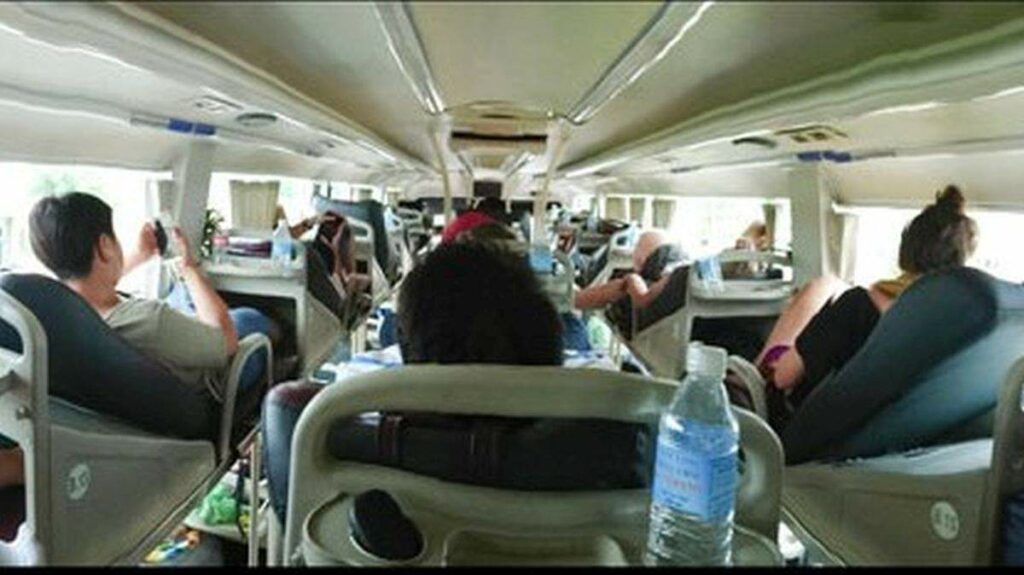
Train:
Vietnam has a relatively well-developed rail network. However, the ticket prices for train rides were much more expensive at that time, which is why we actually travelled exclusively by bus.
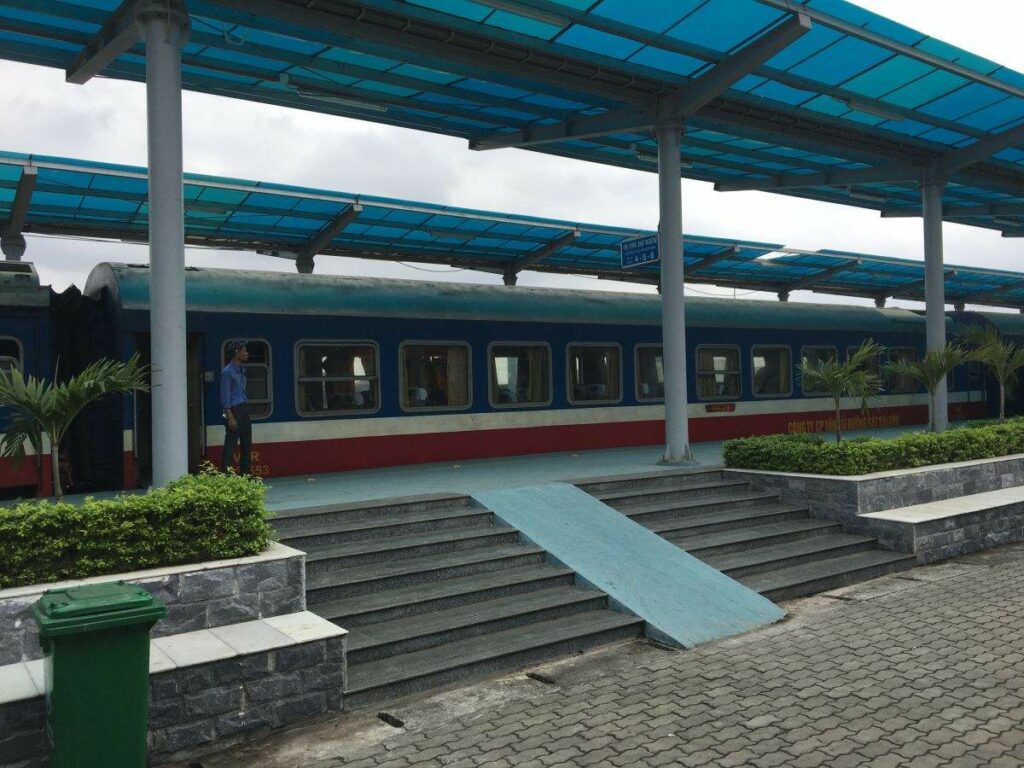
Shopping in Vietnam
In Vietnam, there are some things that are relatively easy to shop for.
Lanterns:
Who would have thought it? The beautiful lanterns in all their colours and designs can of course also be bought in Vietnam. I saw most of the shops in Hanoi and Hoi an. As always, it is much more expensive as soon as these shops are aimed purely at tourists.
Tailored clothing
In the small town of Hoi An, you can have clothes and suits tailored within 24 hours. You go there once, get advice and measurements, and the next day you can pick it up. The clothes made a relatively high-quality impression on us.
The best time to travel to Vietnam
As mentioned above, Vietnam has a large north-south extension, which divides it into 3 different sections – North Vietnam, Central Vietnam and South Vietnam. Of course, naming the “best time to travel” is always relative. People who like to photograph dramatic weather phenomena in the backdrop of the Mekong Delta are of course better advised to travel to Vietnam during the rainy season from June to November. In principle, the best time to travel throughout the country is in spring, from March to April.
Northern Vietnam:
If you don’t want it too hot, you should visit northern Vietnam in spring between March and April or in autumn from September to November. In winter, Hanoi can get cold and temperatures drop to as low as 4°C. In the summer months, the heat can sometimes become unbearable.
Central Vietnam:
If you want to visit the centre of Vietnam around Hoi An, it is best to do so between the months of February and August. Typhoons are common in this region from August onwards.
Southern Vientam:
The dry season southern Vietnam is mostly from December to May and the rainy season from June to November. During the dry season, temperatures can sometimes rise to 40°C. For the south of Vietnam, I consider the season less important than in the centre or the north, as it is warm here all year round. Rainfall rarely interferes with travel plans (personal feeling).
[WPSM_AC id=6913]


